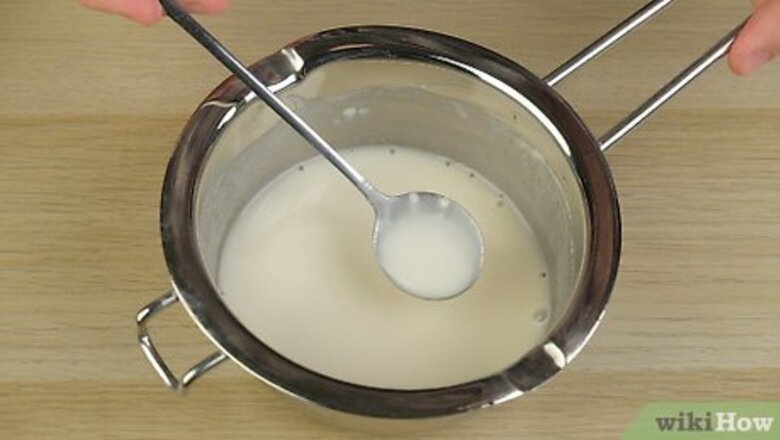
views
Using Flour to Thicken Liquids
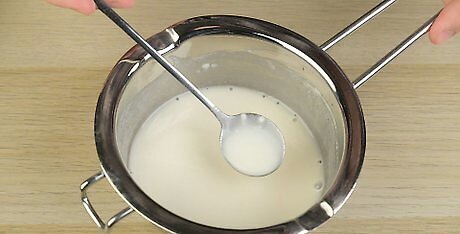
Combine flour and water for a simple sauce thickener. This technique works well when you need to correct an overly thin sauce near the end of cooking Mix the flour and water together in a small bowl that is separate from the sauce you are cooking. Mix 2 tablespoons (16 g) of all-purpose flour with a ¼ cup (60 ml) cold water. A whisk works well to quickly create a flour paste that is free from lumps. You can also use a fork or a spoon to stir your water and flour together. Alternatively, you can use a small container with a tight-fitting lid to mix. Add the flour and water to the container, seal the lid, and shake vigorously for at least 30 seconds. Stir until the mixture is completely smooth.
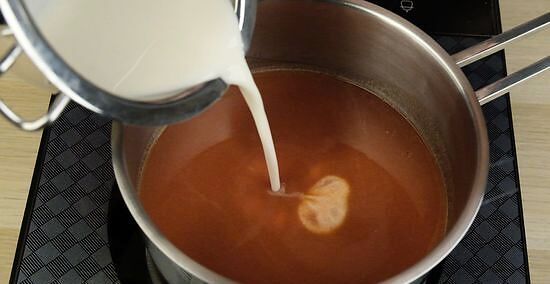
Stir the flour mixture into your warm sauce. Add your mixture gradually, a tablespoon at a time, and stir between each addition. To ensure a smooth consistency, remove a few spoonfuls of the sauce and put them in a small bowl with the flour slurry. Stir the flour mixture and sauce together there, then add the thickened sauce mixture back into your sauce pot. When you add the flour and water, your sauce should be warm but not close to boiling.

Continue cooking the sauce over medium-high heat. Bring the sauce to a boil. To thicken properly with flour, you must bring your liquid to a boil. Stir the sauce occasionally. This ensures that your sauce doesn’t stick to the pan.

Reduce heat and continue cooking. After you reduce the temperature, cook the sauce for about a minute on low heat. While it’s simmering on low, the sauce should thicken considerably. This also ensures that your sauce won't have the starchy taste of flour. A longer cook time will help produce a thicker, richer-tasting gravy.
Using Flour and Fat to Thicken Liquids
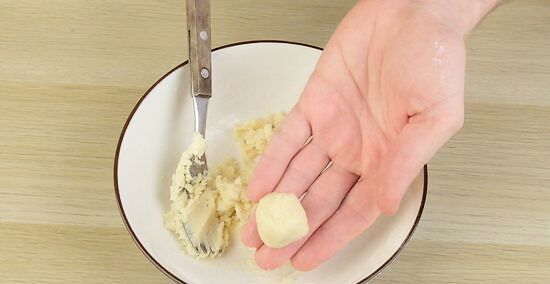
Make a beurre manié. Two types of thickeners using fat and flour are a beurre manié or a roux. Thickening with flour and fat give sauces and gravies a smoother texture than thickening with flour and water, and a beurre manié has a smooth, rich taste. Mix together 4 tablespoons (32 g) each of all-purpose flour and room temperature, softened butter in a small bowl. Use a fork to mash together the flour and butter until they form a paste. Form this paste into small, tablespoon sized balls for easy use. If you don’t need to use them right away, freeze these balls in an airtight container, and bring them to room temperature before use.
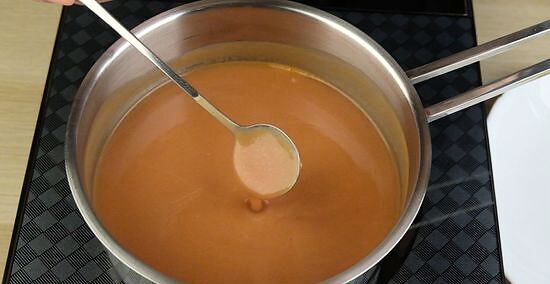
Add your beurre manié to a sauce. The sauce should be almost finished cooking, as you don’t want the beurre manié to cook for too long. Whisk it into your sauce thoroughly, and allow the sauce to simmer for an additional minute or two before taking it off of the heat. This will ensure the taste of your sauce is smooth, without any residual starchy flavor from the flour.
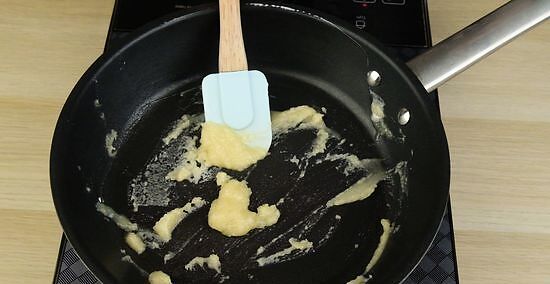
Create a roux. A roux is an excellent way to make thick stews, gravy, gumbo, or cheese sauce. Use two tablespoons (16 g) of butter and all-purpose flour. Roux also uses an equal ratio of flour to butter. Cooking the flour in the butter will help remove the pasty taste of the flour. Heat the butter over medium heat in a saucepan, until it’s melted. Add just a little bit of oil to the pan to keep the butter from burning. Once the butter has melted, gradually add in the flour, whisking constantly until it’s combined and smooth. At this stage, decide how dark you want your roux to be. A darker roux has a darker brown coloring and a nuttier flavor. For a dark roux, continue cooking and stirring constantly until you start to smell a nutty aroma, and your roux is a caramel color. Take your roux off the heat. Gradually whisk your roux into your sauce. Cook the sauce over medium to medium-low heat for 30 minutes or more, stirring occasionally with a spoon or whisk, to give it a smooth, velvety texture. Some bubbling is fine, but do not keep the sauce at a boil.
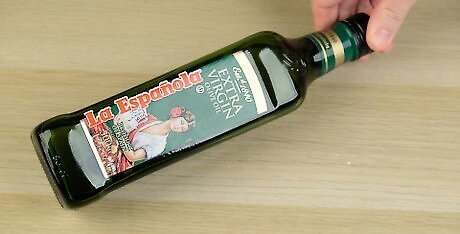
Use an alternative to butter. Though butter often works best, you can use a combination of other fats and flour to create a similar thickening effect. For gravies or stews, consider using meat drippings instead of butter. If you want a vegan option, you can use a plant-based oil, like olive oil, or a premade vegan butter in place of butter.
Using Starches to Thicken Liquids
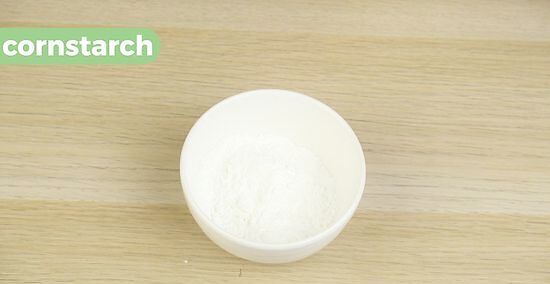
Use cornstarch in sauce. Starches offer a low-fat, simple thickening alternative for sauces that is especially suitable for beginning cooks. You can even add a dash of herbs or spices to starch slurries to make them more flavorful. Starch thickeners are mostly flavorless, but they can give sauces an artificial sheen, making them less popular for stews or meat gravies. Cornstarch is inexpensive, readily available, and best for dairy-based sauces. Do not use cornstarch if you plan on freezing a sauce for later use, however, as cornstarch creates a spongy texture in sauce upon freezing. Combine 1 tablespoon (8 g) of cornstarch with 1 tablespoon (15 ml) of cold water in a small bowl. With a whisk, blend them together until smooth. Gradually whisk the mixture into your cooked sauce that needs thickening. Continue stirring and cooking the sauce over medium to medium-high heat. Bring it to a boil. Reduce the heat to low, and stir the sauce for an additional two minutes, allowing the cornstarch to completely finish cooking and thickening. If you don’t cook your starches, they can leave an aftertaste in your sauce. The longer you cook your sauce or soups, though, the better the flavor will be.
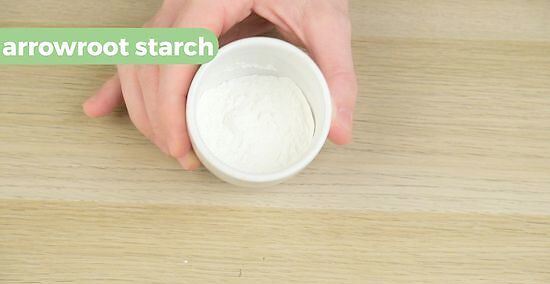
Use arrowroot starch to thicken liquids. Arrowroot is best for more acidic sauces, but avoid mixing arrowroot with dairy. However, you can use arrowroot when cooking with acidic dairy products like buttermilk. Arrowroot starch gives liquids a glossy appearance, making it especially desirable for dessert sauces or reductions. In a small bowl, mix equal parts of the arrowroot starch with cold water, whisking thoroughly to beat out any lumps. Add the arrowroot mixture to the already hot liquid and cook for 30 seconds at medium-high heat, stirring constantly. Remove the sauce from the heat, and allow it to finish thickening as it stands.
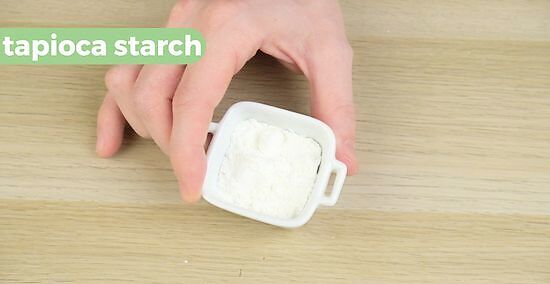
Thicken with tapioca. This is a good option for sauces that need to thicken just before they finished cooking. Like arrowroot starch, tapioca doesn’t need to come to a boil to thicken a sauce. Whisk together equal parts flour and water in a small bowl. Gradually add this mixture to your sauce, and cook for about a minute on medium-high heat. Remove from heat, and let the sauce stand to thicken.
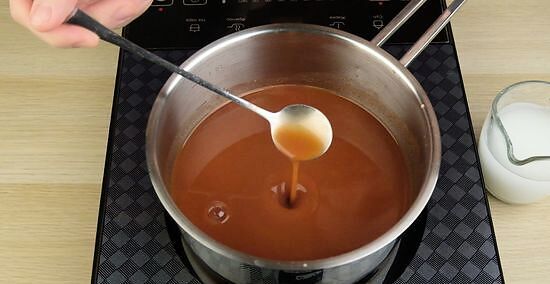
Add starch water to sauces and soups. If you are cooking pasta, potatoes, or another type of starch to go with your meal, set aside a cup of the water that you used to cook your starch. Working a spoonful at a time, stir your starch water into your simmering sauce, soup, or other liquid. Continue this process until you get your desired thickness.
Using Egg Yolks to Thicken Liquids
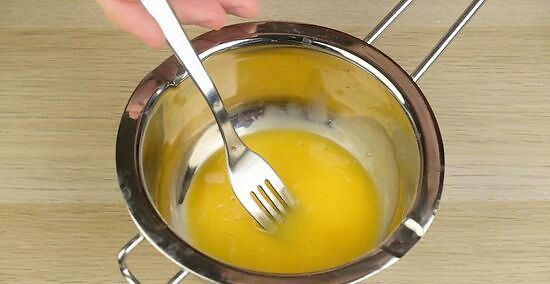
Use a whisk or fork to rapidly beat your egg yolks. Thickening with egg yolks provides a nuanced rich flavor. Sauces like hollandaise are classically thickened this way. Egg yolk can be more difficult to work with than some other thickening agents because overheating will cause the egg yolk to curdle. Beat the yolks until they appear consistently smooth and slightly frothy. Use 2 to 3 egg yolks per cup of liquid sauce you want to thicken. The more egg yolks you use, the thicker the resulting sauce will be.

Temper the yolks. First, bring the beaten egg yolks to room temperature to prepare them for tempering. Don’t try to speed up this process by using heat. Take some of your hot sauce that you want to thicken, and add it gradually to the beaten egg yolks. This will slowly raise the temperature of the yolks and prevent them from curdling.
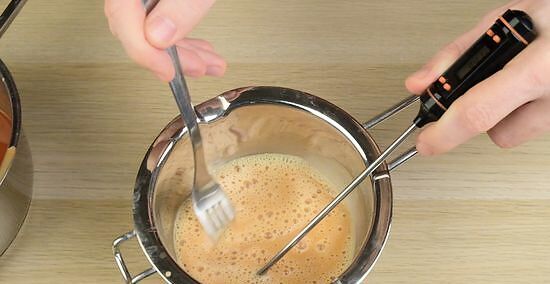
Use a thermometer. To thicken with egg yolks, it is best to use a thermometer while you are tempering the yolks. You want to add enough sauce to the yolks to bring them to the same temperature as your sauce. For the best thickening, this temperature should stay between 149 (65 degrees Celsius) and 158 degrees Fahrenheit (70 degrees Celsius).
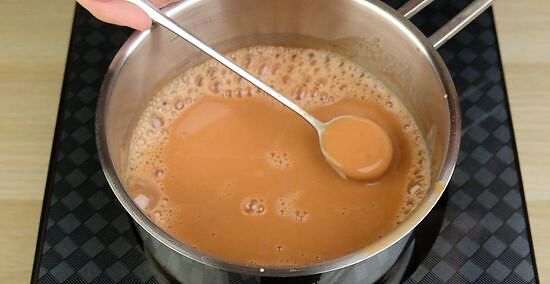
Stir the tempered egg yolk mixture into the sauce. Stir until the two are blended. After you add your egg yolks, avoid letting the sauce get above 190 degrees Fahrenheit (32 degrees Celsius). If the temperature of your sauce is too high, your egg yolks could curdle.
Reducing Liquids to Thicken Them
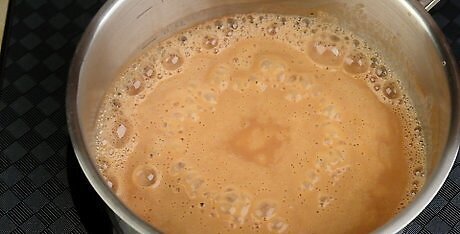
Bring your sauce to a rapid boil. Thickening by reduction intensifies your sauce and also thickens it. This method works well for soups, sauces, and alcohols. It is the best way to thicken naturally without any additives. When you make a reduction, the sauce thickens as water evaporates into steam. Keep your pot uncovered so the steam can escape. Stir occasionally to make sure that your sauce doesn’t boil over the pan.
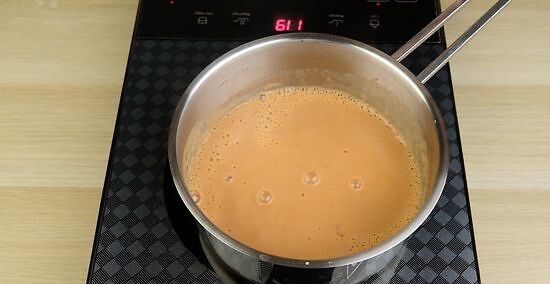
Reduce heat. After large bubbles form in your sauce, you want to reduce the heat and continue to let it simmer until it reaches the desired thickness. Stir occasionally and taste to see if you want to continue cooking your sauce. A thicker sauce can take a long time to achieve but will have intense flavor.
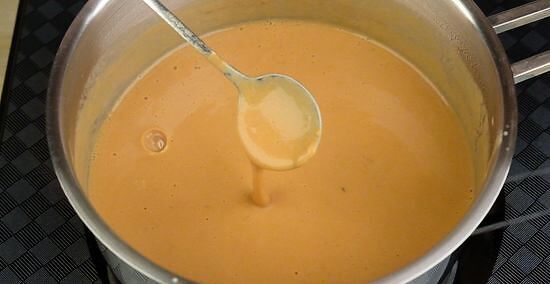
Take the sauce off the heat. Once your sauce has achieved the thickness you desire, turn off the heat and serve. Once it stops cooking, a reduction will not thicken as much as sauces that were cooked with starches or flour. Soups, stews, and sauces can also greatly benefit from being taken off the heat and allowed to set for several hours, up to overnight. This can help concentrate and enhance the flavors.
Thickening Cold Sauces

Use guar gum to thicken a cold sauce. Guar gum is a powder made from a seed native to the Asian tropics. It's a great alternative to starches or flour, when you need to thicken a sauce that is already cold. Use 1 to 2 teaspoons (5 to 10 g) of guar gum per quart (1 L) of sauce or liquid that you want to thicken. If possible, combine the guar gum with oil before adding it to your sauce. This helps it to stay smooth and not create a gummy textures in the sauce. You can mix a few spoonfuls of oil with your guar gum by hand or in a food processor. For example, if you're thickening a salad dressing, mix the guar gum with a bit of olive oil, and then stir it into your dressing. Let the sauce sit to thicken.
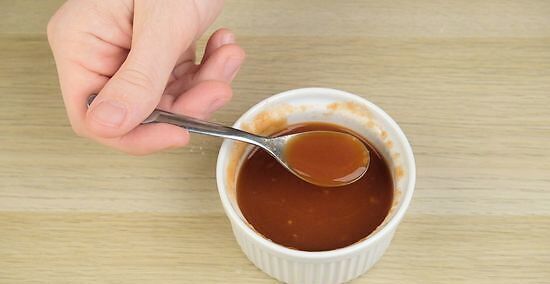
Thicken with xanthan gum. As a rule, guar gum works best for thickening cold sauces. However, if you are thickening a highly acidic cold sauce use xanthan gum instead. Guar gum doesn't thicken as well with acids like citrus. As with guar gum, use 1 to 2 teaspoons (5 to 10 g) of xanthan gum per quart (1 L) of sauce that you want to thicken. It works best to first mix the xanthan gum with a small amount of oil, but if you don't want to do this, you can whisk the xanthan gum directly into your sauce, and let it sit to thicken.
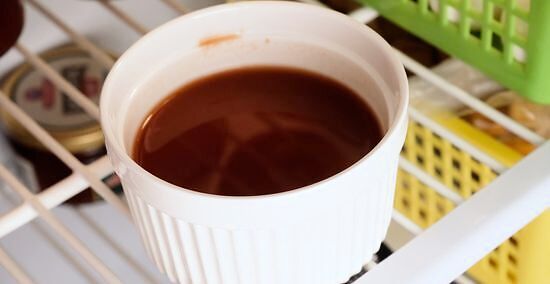
Use gelatin to thicken sauces. Gelatin can be used to thicken cold sauces, but you must first dissolve it in warm water, and then let it cool. Gelatin can also be an alternative to carbohydrate thickeners like flour. To create a thick sauce with gelatin, use 4.5 teaspoons (22.5 g) of unflavored gelatin for every 1 cup (236 ml) of sauce that you have. In a bowl, add hot water to your powdered gelatin. Slowly pour in just enough water to dissolve all the gelatin granules. Then, add your hot water and gelatin mixture to your cold sauce. Allow the sauce to come back to room temperature, and then refrigerate.
Thickening Liquids for Medical Reasons
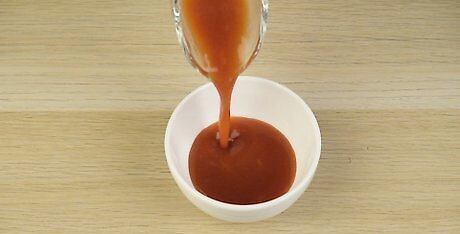
Make a nectar-thick liquid. Thickening your liquids can help prevent choking and prevent fluid from getting into your lungs. Ask your doctor what consistency your liquids should be when you thicken them. Nectar-thick liquids are easy to pour. They're approximately the thickness of a cream soup. Combine 1 and 1/2 teaspoons (7.5 g) of commercial thickener to 1/2 cup (118 ml) of thin liquid. You can purchase commercial thickeners at most drug stores.

Make your liquids honey-thick. Honey-thick liquids are not as pourable as nectar. They drizzle off of your spoon slowly. Combine 1 and 1/2 tablespoons (22.5 g) of your commercial thickener with 1/2 cup (118 ml) of thin liquid.
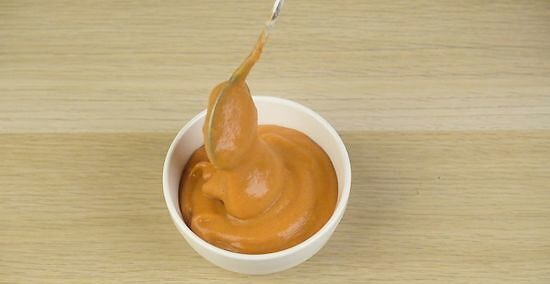
Create a pudding consistency in you liquids. This is the thickest consistency that you should thicken your liquids for medical reasons. You can eat pudding-thick liquids with a spoon. To create pudding thickened liquids, combine 2 tablespoons (30 g) of commercial thickener with 1/2 cup (118 ml) of thin liquid.




















Comments
0 comment